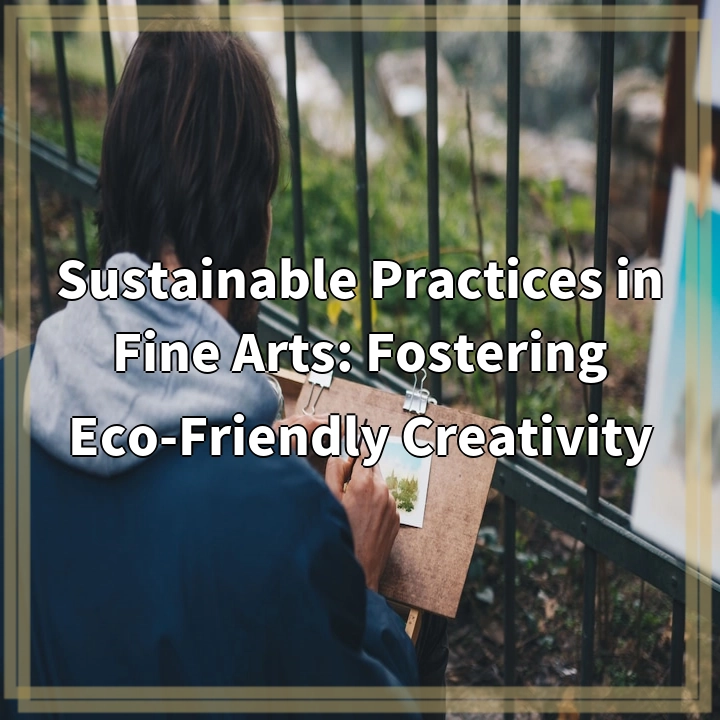
What is Sustainable Practices in Fine Arts?
Sustainable Practices in Fine Arts refers to the use of environmentally-friendly and socially responsible approaches in the field of art and creativity. It involves incorporating principles of sustainability throughout the artistic process, from material selection and resource management to the overall impact on the environment and society. By adopting sustainable practices, artists aim to minimize their ecological footprint and contribute to a more sustainable future.
Real-World Problems Associated with Sustainable Practices in Fine Arts
While sustainable practices in fine arts offer numerous benefits, there are several real-world problems that artists face when striving to create in an eco-friendly manner.
Limited Availability of Sustainable Materials
One of the challenges faced by artists is the limited availability of sustainable art materials. Finding alternatives to conventional art supplies, which often contain toxic chemicals or non-recyclable components, can be a struggle. Artists have to invest time and effort in researching and sourcing environmentally-friendly materials that align with their artistic vision.
Cost Implications
Another issue artists face is the higher cost of sustainable art materials. Eco-friendly options may be more expensive compared to traditional supplies due to the smaller demand and production scale. This can pose financial constraints for artists, especially those starting their careers or operating on a tight budget.
Artistic Constraints
Sustainable practices sometimes require artists to compromise on certain aesthetic choices or techniques. For example, using eco-friendly paints may limit the range of available colors or require adjustments in application methods. Artists must find innovative ways to express their creativity while adhering to sustainability principles, which can be a creative challenge.
Awareness and Education
A lack of awareness and education about sustainable practices in the fine arts industry can also be a significant problem. Artists and art institutions may not be fully informed about the environmental impact of their materials and processes. Raising awareness and providing resources and training on sustainable practices are essential to facilitate the adoption of eco-friendly approaches.

Solutions for Sustainable Practices in Fine Arts
Addressing the real-world problems associated with sustainable practices in fine arts requires a multi-faceted approach that involves artists, suppliers, and art institutions working together. Here are some solutions to overcome the challenges and foster eco-friendly creativity in the field of fine arts:
1. Increasing Availability of Sustainable Materials
To address the limited availability of sustainable materials, artists can actively seek out suppliers that offer eco-friendly alternatives. Additionally, art suppliers can expand their product offerings to include a wider range of sustainable art materials. Collaboration between artists, suppliers, and sustainability-focused organizations can help create a demand for sustainable art supplies and encourage increased production and availability.
2. Promoting Affordability
To overcome cost implications, artists can explore different options, such as using recycled or upcycled materials, or sharing resources with other artists. Art institutions and organizations can also provide grants or funding opportunities specifically for sustainable art projects, enabling artists to afford eco-friendly materials and practices.
3. Encouraging Innovation
Finding ways to overcome artistic constraints requires creativity and innovation. Artists can experiment with alternative techniques and materials, push boundaries, and embrace the unique aesthetic qualities that sustainable practices may offer. Embracing the challenge of sustainability can lead to exciting and unconventional artistic expressions.
4. Education and Collaboration
Raising awareness and providing education on sustainable practices in fine arts are crucial. Art institutions can incorporate sustainability into their curriculum and offer workshops and training sessions on eco-friendly approaches. Collaborative efforts between artists, sustainability organizations, and educational institutions can further promote knowledge sharing and foster a community of eco-conscious artists.















